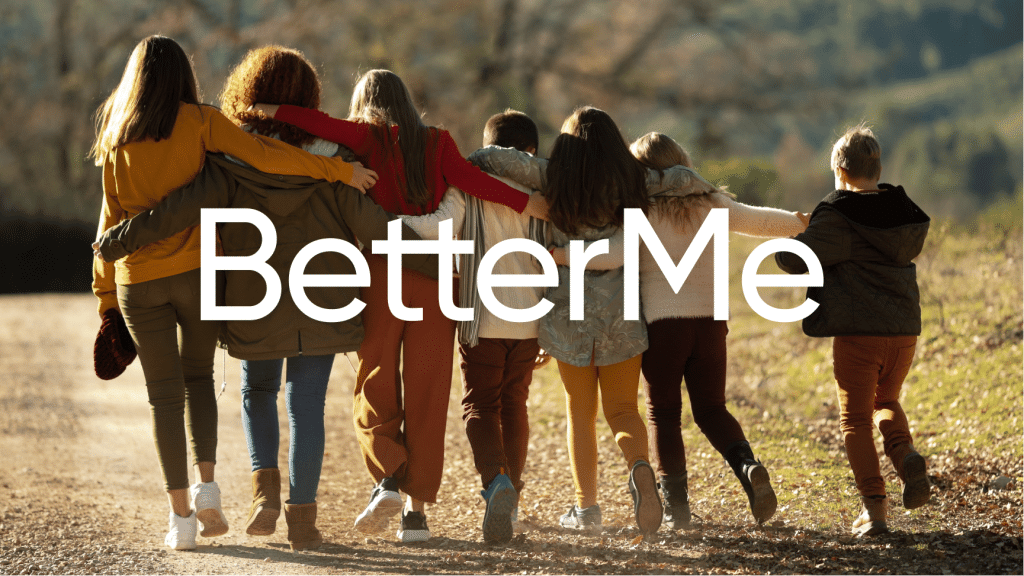Motherhood is a beautiful journey. Your entire personality flips the day you hold that little bundle of joy in your arms. Moms decide to become better versions of themselves just to ensure the healthy nurture of their children. And this is where postpartum running comes under discussion. You may crave to be in bed for days after childbirth. The idea of going for a run may seem absurd. But let us break it to you – postpartum running is your road to recovery, a leaner body, and a chance to clear your mind. A happy and healthy mom can create a safe and pleasant environment for her kids. Whether you have been running laps before or wish to pick it up as a new activity, you should consider all the angles of postpartum running before lacing up your shoes.
What Factors Should Be Considered Before Running Postpartum?
It is safe to run after pregnancy, but you should consult your OB-GYN or a physical therapist to determine the right time. Some factors like your previous exercise routine, delivery conditions, and emotional well-being also come into play when considering to run after pregnancy.
Your body has undergone significant physical and hormonal changes in the past nine months. It is essential to let it readjust before you chalk out a postpartum running plan.
Following are some of the factors you should analyze:
Hormone Shifts
Your hormones may be in flux, so your body may still be unstable. This will likely cause orthopedic issues like unstable joints and low back pain (1).
General Recovery
Recovery from childbirth is vital to get back into running or another exercise. The duration of recovery depends on how you birthed. Was it a vaginal recovery or a c-section?
Either way, you will experience a heavy vaginal discharge called lochia. This consists of mucus membranes and blood, and it is necessary to wear pads. Many women also experience cramps during this period, which causes pain. In the case of stitches, the area becomes even more sensitive. Jumping into an exercise routine while the body is recovering could cause more pain and discomfort (2).
Breastfeeding
Breastfeeding plays an important role when determining your pace and duration of running. But it shouldn’t limit or stop you from participating. In fact, regular aerobics of lactating women has been shown to enhance maternal cardiovascular fitness without affecting their milk production (3). Using a nursing bra and adapting to the baby’s feeding schedule could help you to adjust running in your routine.
Read More: 6 Running Signs Of Overtraining And How Can You Treat It
When To Start Running Postpartum?
Most women are ready to run after 12 weeks of childbirth. The 2019 Postpartum Exercise Guidelines approved by the Association of Chartered Physiotherapists in Sports and Exercise Medicine found that waiting can reduce the risk of severe health issues like muscle tears, falls, and urinary incontinence (4).
The 12-week milestone is recommended for patients who had a vaginal delivery. Your therapist will recommend waiting for a more extended period if you had:
- Obesity before pregnancy
- Diastasis recti (5)
- Perineal training
- A c-section
- Extra scar tissue in the pelvic area
A waiting period of 12 weeks doesn’t mean you can’t work out. Most women can start by walking for half an hour at a slow to moderate pace a few days after their delivery (6).
When you hit the 12-week mark, you can measure your strength by conducting a few physical tests. If your body is prepared to run, you should be able to:
- Balance on one leg (each side) for ten seconds
- Complete your pelvic floor strength circuit without any troubles
- Hop on a single leg ten times without losing your balance
- Jog in one position for a whole minute
- Perform one-leg running moves (ten times per side)
If you feel pain or have trouble keeping balance in any of these activities, you should wait some more weeks before returning to running postpartum. If you rush the process, it could bring more complications your way. This may extend the recovery period even more.
When Can I Start Running Postpartum?
As mentioned, you should start by walking for 30 minutes initially. Add more minutes in the next week according to your energy levels. It is crucial to pay attention to your body mechanisms. For example, you shouldn’t slouch while running and should breathe well to rebuild your endurance.
Keep in mind that the body structure of every woman is different from others. The hormone cocktail in your body makes you prone to more injuries. So, giving yourself time and tools to help your body heal before exerting it more is important.
The following measures will prepare your body for running:
Consultation With A Pelvic Floor Therapist Or A Physical Therapist
Assessing your pelvic floor health for underlying health issues is essential. You may feel all set to hit the tracks, but many hidden issues could impact your physical health. For example, if you are breastfeeding, your joints may be loose due to the hormonal tweaks across your body. Check with your doctor to understand if your body can support the workouts.
Sometimes, moms may experience unusual symptoms, but they consider it a regular body change. Chances are, they aren’t normal!
A comprehensive examination from your therapist will help you to fix the issues you may be facing. They may recommend abdominal bracing and pelvic tilts to ensure your pelvic floor and abdominals are ready to return to running.
Some common exercises that pelvic floor specialists recommend are:
- Deep core stabilizing movements
- Eccentric loading hamstring exercises
- Deep core stabilizing movements
- Stretching hip flexors
- Diaphragmatic breathing exercises
All these exercises are generally vital for runners to maintain their health and posture. Most pregnant women have an anterior pelvic tilt which may hinder running. These exercises will enable them to overcome this condition and prepare their body for running.
Postnatal Strength Training
Running requires a lot of stability, control, flexibility, and strength. A regular postnatal strength training routine will prepare your body for more intense workouts, like running.
Your body has gone through massive changes during pregnancy. It must feel strong and ready to tackle the impact and load of running. To help prepare your lower body for postpartum running, you should dedicate a few days per week to perform exercises like single-leg bridges, split squats, and calf raises.
Eat, Sleep, And De-Stress
Running is a high-impact exercise that needs a ton of calories to move your body forward. This makes a woman feel lethargic and tired. One should remember that there is one more life depending on their well-being. You should ensure you sleep and eat well to keep your body fueled.
If you had a rough night with the baby, you should cut yourself some slack, choose to walk instead, and hit the sack early. The next day, you may wake up feeling pumped up for a longer run.
The risk of a postnatal mother developing Relative Energy Deficiency in Sports shouldn’t be ignored. This condition refers to an energy deficiency relative to the balance between dietary intake and the energy expenditure required to support health and daily activities. It affects several physiological functions like metabolic rate, immunity, bone health, and menstruation (7).
If you wish to free yourself from all the extra pounds that have been weighting you down for way too long, start using the BetterMe app and overhaul your entire life!
What Is An Ideal Postpartum Running Plan?
Here is an ideal schedule you should follow when returning to postpartum running. You must seek the assistance of your OB-GYN to guide you through the process and ensure that you aren’t straining yourself.
Week 1 – 6
There is no need to rush during these weeks. Develop a gradual habit of working out but prioritize your rest.
- Rest when your body needs it
- Perform breathing exercises
- Postnatal yoga
- Walking
- Gentle exercises
Week 6
Have a follow-up with your pelvic health therapist to start postpartum rehab and return to the postpartum running routine.
Week 6 – 12
These are the weeks to prepare your body for running. Following exercises may help in this regard:
- Endurance training
- Single leg exercises
- Strength training
- Plyometric training
Week 12
When your therapist finds you can hit the tracks again, they will conduct a pelvic floor screen. The components of this screening are:
Load management
- Walking – 30 minutes
- Single leg squat – 10 reps per side
- Single leg balance – 10 seconds per side
- Jog on the same spot – 1 minute
- Single leg hop on the same spot – 10 reps each leg
- Forward bounds – 10 reps
Pelvic floor strength
- Grade III MMT (lift fingers to the pubic bone in crook while standing and lying)
- 10 times fast reps
- 8-12 reps of 6 to 8 seconds of voluntary contractions
Lower body strength
- Single leg bridge – 10 times per side
- Side lying abduction – 10 times per side
- Single leg calf raises – 10 times per side
- Single leg sit to stand – 10 times per side
When you can pass the evaluation through these movements, your body is ready for postpartum running.
Week 12 +
Your GP or OB-GYN will help you to create a postpartum exercise plan. Ensure that all your routines will help you to improve your running speed and posture.
Read More: Negative Splits Running – Start Slow, Finish Fast
What Are The Signs That I Am Overdoing It?
It is normal to feel discomfort when you begin postpartum exercises. Consider visiting a physician if you notice any of the following symptoms during postpartum running or workouts:
- Chest pain
- Headaches
- Continuous pelvic pain
- Extreme shortness of breath
- Muscle weakness
- Leakage of bleeding
- Increase in abdominal separation
- Calf pain or swelling
- Rectal, vaginal, or bladder pressure
If you face any of these symptoms, it is better to work with a therapist and address them before they become more serious. Also, keep tabs on your mental health, and don’t hesitate to call an expert if you feel anxious or stressed over insignificant matters.
Yanking yourself back in shape has never been so easy with our game-changing fitness app! Start transforming your life with BetterMe!
The Bottom Line
Mom life is hard. Don’t worry about not doing enough when you feel lazy or tired to work out. Every expert will tell you to listen to your body and focus on your baby. You can start running postpartum when you feel like it and slowly adjust these runs into your routine. Meanwhile, you should also watch your diet, sleep, and psychological health. The kinder you are towards your body, the happier and healthier runner you can be!
DISCLAIMER:
This article is intended for general informational purposes only and does not address individual circumstances. It is not a substitute for professional advice or help and should not be relied on to make decisions of any kind. Any action you take upon the information presented in this article is strictly at your own risk and responsibility!
SOURCES:
- Pregnancy-related low back pain (2011, ncbi.nlm.nih.gov)
- Exercise Behaviors and Health Conditions of Runners After Childbirth (2017, ncbi.nlm.nih.gov)
- A randomized study of the effects of aerobic exercise by lactating women on breast-milk volume and composition (1994, pubmed.ncbi.nlm.nih.gov)
- Returning to running postnatal – guidelines for medical, health and fitness professionals managing this population (2019, researchgate.net)
- Lingering abdominal bulge after baby? It could be diastasis recti (2017, utswmed.org)
- Physical activity patterns among women during the postpartum period: an insight into the potential impact of perceived fatigue (2022, bmcpregnancychildbirth.biomedcentral.com)
- Reframing return-to-sport postpartum: the 6 Rs framework (2021, pubmed.ncbi.nlm.nih.gov)















